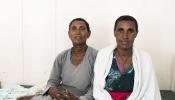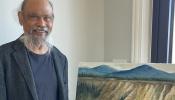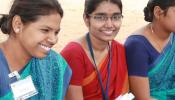By Penny Lyons Executive Director, Seva Canada
November 20th
Thirty six elderly Tanzanians sit under the shade of a Poinciana tree in Ndatu village. All are from the same village in the district of Arumeru, about an hour from Moshi. They know each other well so the air is a filled with the sounds of laughter and conversation.
I have come to this village with a team from KCCO. There are 4 of us: Herieth Mganga, KCCO’s new gender and blindness coordinator, Fred the driver who doubles as the visual acuity tester in the field, Dr. Amadou Bio from Benin, who is training to be an ophthalmologist, and myself.
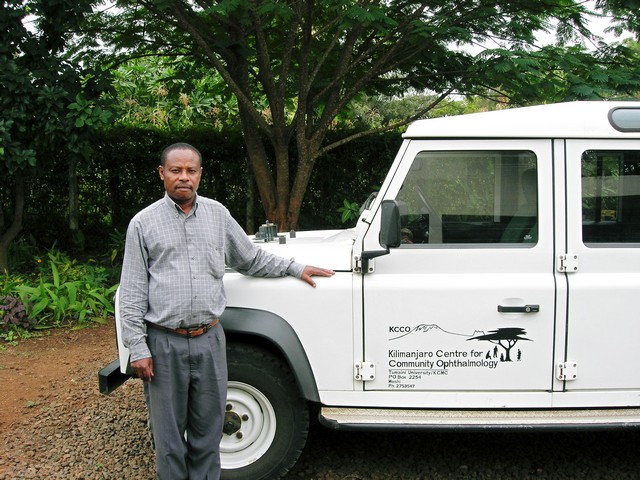
Fred at the Kilimanjaro Centre for Community Ophthalmology in Tanzania
All 36 of these people have agreed to participate in a study (there will be 150 participants in total from 4 different villages) to determine the effect that correcting presbyopia (or age related far-sightedness) has in their daily life. Do reading glasses make an elderly Tanzanian’s life easier? Most are illiterate but if they can now pick the stones from the rice, thread a needle and take thorns from their fingers will this significantly improve their quality of life?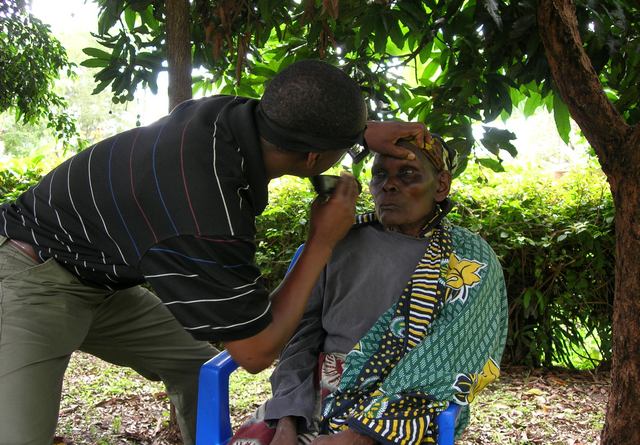
A patient has her eyes examined in Tanzania
There is very little refractive error in Africa and most of these people have distance vision that someone 40 years their junior would envy. The flip side of that great distance vision is that many of the 36 have difficulty seeing things that are close so “reading” glasses (even though most do not read) are provided to them free of charge. While doing the vision testing, four cases of cataract were diagnosed and referred on to hospital for treatment and a few infections were treated.Each person who received reading glasses will be visited in their homes in three months to determine what difference, if any, the reading glasses had on their daily life.
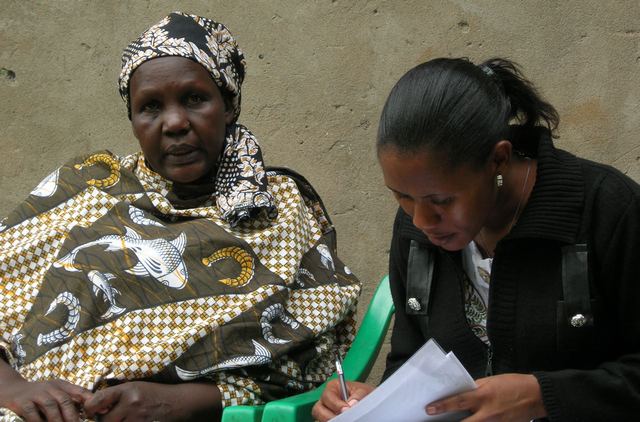
Heriath Mganga, KCCO’s new gender and blindness coordinator, working with women in rural Tanzania
At this point you might be asking yourself if this study is important, or even relevant, to the elimination of preventable and treatable blindness. It is because it illustrates the cornerstone of all of Seva and our partner’s work; together we create programs that are based on evidence. Evidence tells us a problem exists, it tells us the extent of the problem and it tells us what should be done to correct that problem.With evidence, we can spend our donor’s dollars effectively and get the maximum benefit – whether we are studying presbyopia, childhood blindness, the incidence of cataract in a population or the barriers people face when trying to access treatment.
